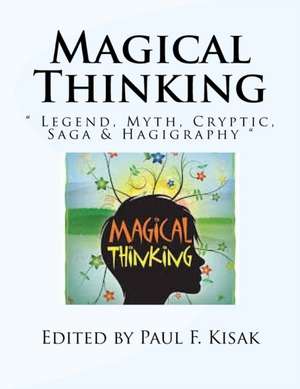Magical Thinking
Autor Edited by Paul F. Kisaken Limba Engleză Paperback
Preț: 149.02 lei
Nou
Puncte Express: 224
Preț estimativ în valută:
28.52€ • 30.99$ • 23.98£
28.52€ • 30.99$ • 23.98£
Carte disponibilă
Livrare economică 31 martie-14 aprilie
Preluare comenzi: 021 569.72.76
Specificații
ISBN-13: 9781533353856
ISBN-10: 1533353859
Pagini: 290
Dimensiuni: 216 x 280 x 15 mm
Greutate: 0.68 kg
ISBN-10: 1533353859
Pagini: 290
Dimensiuni: 216 x 280 x 15 mm
Greutate: 0.68 kg
